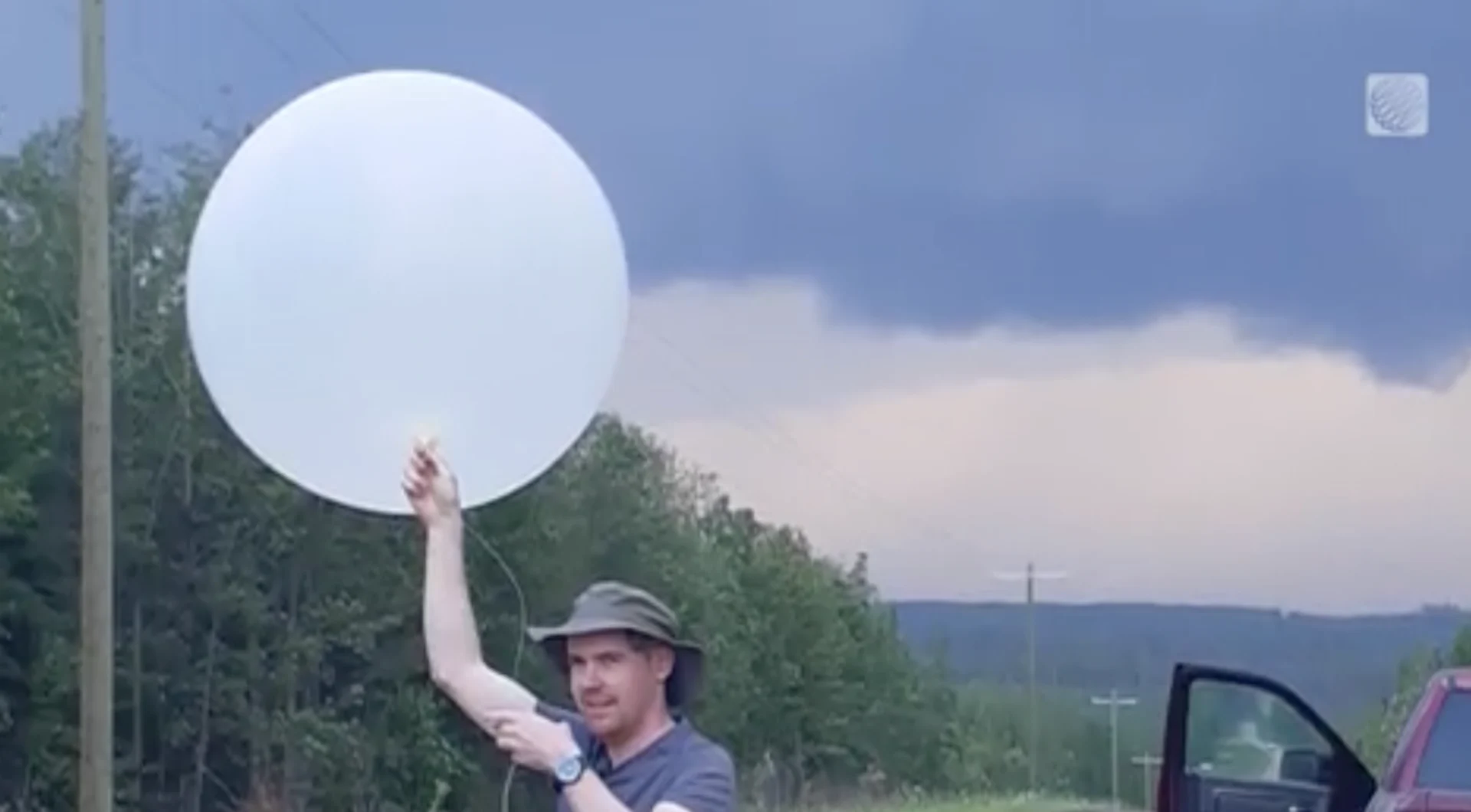
'Hailsonde' released into the eye of an Alberta storm in a world-first
New Twister-inspired technology successfully collects hail data from the eye of a storm for the first time ever
In a scene reminiscent of the 1996 blockbuster Twister, a team of researchers successfully sent two trackable devices through the eye of a supercell hail storm west of Edmonton on July 24.
The "hailsonde" experiment, meant to replicate the movement of a hailstone through a storm, is believed to be the first of its kind. The research could eventually help meteorologists more accurately predict where and when a storm’s hailstones will fall.
"For me, it was always a crazy idea, like you see it in Twister, and you think this can’t really be true," said researcher Joshua Soderholm, who has been leading the development of the hailsondes for the past five years. "I was pretty ecstatic that it actually worked. It’s about time; we’ve been trying to do this for some time."
Soderholm’s hailsondes consist of a tiny radiosonde packed into a small 3D-printed sphere. The radiosonde, produced by Swedish company Sparv Embedded, can transmit information on wind speed, temperature, humidity, and location to the ground. Released from the ground below a storm, the hailsondes are attached to a weather balloon, which can be remotely cut away when the device reaches an ideal point in a storm’s updraft. In their current form, Soderholm’s hailsondes weigh less than 25 g and cost just a few hundred dollars to produce.
RELATED: Peas, walnuts and golf balls—here’s what hailstone size means for damage
After several failed attempts, which helped narrow down exactly where to release the hailsonde within a storm, Soderholm successfully tracked two into and around a mesocycle and eventually to the ground. The hailsondes were released at approximately three kilometres above sea level and were carried to heights of more than seven kilometres by winds exceeding 120 km/h.
The Australian researcher, who was in Alberta this summer conducting research alongside Western University’s Northern Hail Project, said the collected data could prove valuable for predicting how a hail storm will impact a region.
"These are incredibly powerful for both understanding how hail growth relates back to the storm structure itself and also for nowcasting because we can correct for issues like wind. You’ll often get strong winds in these cells, which can move the hail by a couple kilometres on the way down," Soderholm said.
"We’re really hoping these probes can help us refine that new generation of models that are coming out, particularly if they can be used for nowcasting, for predicting hail impacts on a smaller scale. And I think there will be more demand for that going into the future."
Researchers Matthew Kumjian, Jordan Brook, and Anders Petersson helped develop the hailsonde technology.
To learn more and see how hailsondes work, watch the video that leads this article.











